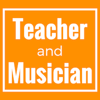In Music in Schools: Promoting Good Practice, Ofsted published a guide for observing music lessons....
A response to John Finney
John Finney got many of us thinking last week when he talked about ‘thick descriptions’ of music lessons. Essentially, these ‘thick descriptions’ capture music lessons using language more typically found in a novel. John went on to provide a description that he had written himself. As I tweeted at the time, it is easily the best description of a music lesson that I’ve ever read.
Yesterday, John wrote a follow-up blog where he referenced my post about using 2EA to give pupils feedback in music lessons. He suggested that it might be possible to find examples of ‘error, accurate, exaggerate, accurate’ within his text and that is exactly what I’m trying to do below, where I’ve quoted sections of John’s original text where I would imagine the teacher employed 2EA (whether consciously or not).
Quote One
I think it’s safe to assume that the teacher would have made frequent use of 2EA, whenever the pupils’ performance was not to her satisfaction.
Quote Two
This call and response teaching technique lends itself very well to 2EA. The teacher can highlight what it is she doesn’t want simply by playing what the pupils did. She can then play what she does want, exaggerate the difference and return to accurate. Very little talking necessary – all musical and some non-verbal communication.
Quote Three
This seems like a great example of exaggerate to me.
Quote Four
Another good example of exaggerate, right down to the talking/explaining as she plays.
Quote Five
I wonder if the teacher punctuated this instruction with some musical feedback. Letting the child hear the difference when she plays with the mouth of the djembe open and closed.

